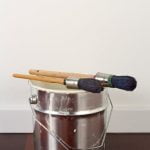Are you tired of dropped calls and slow internet on your cell phone at home? If so, you’re not alone. Many people struggle with poor cell phone signal quality in their own homes, which can be frustrating and inconvenient. In this article, we will explore various methods to improve the cell phone signal at your home, from understanding how cell phone signals work to implementing external boosters and optimizing device placement.
Having a strong cell phone signal at home is essential for staying connected with family, friends, and colleagues. Whether it’s for making important calls, sending urgent messages, or simply browsing the web, a reliable signal is crucial for everyday communication and productivity. It can be especially frustrating when poor signal quality affects our ability to work from home or to stay in touch with loved ones.
Understanding how cell phone signals work and the factors that can affect their strength is the first step toward improving signal quality at home. By conducting a signal strength test and identifying potential sources of interference within your home, you can gain insight into the severity of the issue and determine the best course of action to address it.
Understanding Cell Phone Signals
When it comes to understanding how to improve cell phone signal at my home, it’s important to first understand how cell phone signals work. Cell phone signals are transmitted through radio frequency waves from nearby cell towers to your device. The strength of the signal can be affected by various factors such as the building materials of your home and the distance from the nearest cell tower.
Factors that can affect signal strength include:
- Building materials: Thick or dense materials like concrete, metal, or brick can weaken cell phone signals as they have a harder time passing through these barriers.
- Distance from cell tower: The farther you are from a cell tower, the weaker the signal may be when it reaches your device.
Understanding these factors helps in identifying potential reasons for poor signal strength within one’s home. Once you understand these factors, you can then move on to conducting a signal strength test to determine the severity of the issue.
It is imperative to conduct a signal strength test using available tools or apps on your phone or dialing a specific number provided by your service provider. Once you have conducted the test, you will be able to interpret the results and determine whether there is indeed a significant issue with the cell phone signal at your home. This step is crucial in finding effective solutions to improve your home’s cell phone reception.
Conducting a Signal Strength Test
When experiencing poor cell phone signal at home, the first step to addressing the issue is to conduct a signal strength test. This test will help you determine the severity of the problem and guide you in finding solutions. There are various methods for conducting a signal strength test, including using phone apps or dialing a specific number to check your signal.
One way to check your cell phone signal strength is by using mobile apps specifically designed for this purpose. These apps can provide detailed information about the signal strength in your area, including the available networks and their respective strengths. Some popular apps for this are OpenSignal, Network Signal Info, and LTE Discovery. By using these apps, you can gain insight into how strong or weak the cellular signal is within your home.
Another method to conduct a signal strength test is by dialing a specific number on your phone. For instance, on most Android devices, you can dial *3001#12345#* or *#*#4636#*#* to access a hidden menu with detailed network information, including signal strength.
On iPhones, dialing *3001#12345#* and pressing call will bring up a similar field test mode that includes signal strength readings. By utilizing these methods, you can gauge the seriousness of your cell phone signal issues at home and determine whether further steps need to be taken in improving it.
It’s crucial to interpret the results of your signal strength test accurately as it will guide you in deciding which measures should be taken to improve the cellular reception in your home. Factors such as low bars on your device or high levels of interference detected during the test may indicate that action needs to be taken to resolve the issue effectively.
| Method | Application |
|---|---|
| Mobile Apps | OpenSignal, Network Signal Info, LTE Discovery |
| Dialing Specific Number | *3001#12345#*, *#*#4636#*#* |
Identifying Signal Interference
Potential Sources of Signal Interference
Signal interference at home can be caused by a variety of sources. Electronic devices such as microwaves, cordless phones, and even baby monitors can disrupt cell phone signals. Additionally, physical barriers such as thick walls, metal roofs, and even certain types of insulation can obstruct the transmission of signals into your home. It’s important to identify these potential sources of interference in order to address the issue effectively.
Methods for Identifying and Addressing Specific Sources of Interference
One way to identify specific sources of signal interference is by conducting a systematic process of elimination. By powering off or moving electronic devices one by one and observing any changes in signal strength, you can pinpoint the exact source of interference. In addition, walking around your home with your cell phone and noting areas with weak signals can help identify physical barriers that may be causing signal disruptions.
Once you have identified the specific sources of signal interference, there are several methods to address them. For example, relocating electronic devices away from areas where you use your cell phone frequently can help minimize interference. You may also consider repositioning furniture or rearranging room layouts to reduce the impact of physical barriers on signal strength.
Tips for Optimizing the Placement of Devices at Home
In addition to addressing specific sources of interference, optimizing the placement of your cell phone and other devices at home can significantly improve signal strength. Placing your devices near windows or higher elevations within your home can help enhance reception.
Additionally, keeping your cell phone away from other electronic devices while in use can reduce potential interference. By strategically placing and using your devices within your home, you can mitigate many common sources of signal interference and improve overall signal quality.
By identifying and addressing specific sources of signal interference along with optimizing device placement within your home, you will be able to take significant steps towards improving the cell phone signal at your residence.
External Signal Boosters
If you are experiencing poor cell phone signal at home, one solution to consider is using an external signal booster. These devices are designed to amplify weak cellular signals and improve reception within your home. In this section, we will explore how external signal boosters work and the considerations for selecting and installing one.
How External Signal Boosters Work
External signal boosters, also known as cell phone signal amplifiers, consist of three main components: an exterior antenna, an amplifier, and an interior antenna. The exterior antenna is installed outside the home to capture the existing weak signal from the nearest cell tower. The amplifier then boosts this signal and sends it to the interior antenna, which broadcasts the improved signal within the home. This process effectively expands and enhances the coverage area for better reception.
When considering a signal booster, it is essential to choose one that is compatible with your cellular carrier’s network. Different carriers use different frequencies and technologies, so be sure to select a booster that supports your specific carrier for optimal performance.
Considerations for Selecting and Installing a Signal Booster
When selecting a signal booster for your home, there are several factors to consider. First, determine the size of the coverage area you need to improve. Signal boosters come in various models with different coverage capacities, so it’s important to select one that can effectively cover your entire home.
Additionally, consider whether you need a single-carrier or multi-carrier signal booster. A single-carrier booster is designed to work with one specific cellular provider, while a multi-carrier booster supports multiple carriers simultaneously.
Once you have selected a suitable signal booster, proper installation is crucial for its effectiveness. Follow the manufacturer’s guidelines for positioning the exterior antenna in an area with good outside signal reception. The interior antenna should be strategically placed within your home to ensure even distribution of the boosted signal.
By investing in an external signal booster and taking these considerations into account during selection and installation, you can significantly improve cell phone signal at your home and enjoy enhanced call quality and data speeds.
Elevation and Placement of Devices
Having a strong cell phone signal at home is essential for staying connected and being able to make and receive calls, send texts, and access the internet without any interruptions. There’s nothing more frustrating than experiencing dropped calls or slow data speeds due to poor signal reception. If you’ve been wondering how to improve cell phone signal at my home, one important factor to consider is the elevation and placement of your devices.
When it comes to improving cell phone signal at home, the elevation and placement of your devices can significantly impact signal strength. Here are some tips for optimizing the placement of your devices:
- Elevate your devices: Try placing your cell phone or mobile device in an elevated position, such as on a higher shelf or near a window. Being higher up can often provide better line-of-sight with nearby cell towers, resulting in stronger signal reception.
- Avoid physical barriers: Keep your devices away from physical barriers that can potentially block the cell phone signals, such as thick walls and large furniture. Placing your device in an open area can help prevent signal interference.
- Use a signal booster: Consider using a signal booster specifically designed for indoor use. These boosters work by capturing the existing outside cell phone signal and amplifying it within the building, providing improved coverage throughout your home.
By taking these simple steps to optimize the elevation and placement of your devices at home, you may notice a significant improvement in your cell phone signal strength. Additionally, if you’re still facing issues with poor reception after trying these tips, there are other methods and tools available to further enhance your cell phone signal at home.
Wi-Fi Calling and Network Extenders
In the quest to improve cell phone signal at home, Wi-Fi calling and network extenders emerge as practical and effective solutions for many individuals. Wi-Fi calling allows users to make calls over a Wi-Fi connection instead of relying solely on a cellular network.
This can be particularly useful in areas with poor cellular reception but strong Wi-Fi signals. Additionally, network extenders work by boosting the cell phone signal within a specific area of the home, providing improved coverage and call quality.
Setting up Wi-Fi calling is relatively simple, as it usually involves enabling the feature on your smartphone and connecting to a Wi-Fi network. Most modern smartphones have built-in capabilities for Wi-Fi calling, making it accessible to a wide range of users.
On the other hand, network extenders require a bit more effort to set up as they typically involve connecting the device to your existing internet router and placing it in an optimal location within your home.
Both Wi-Fi calling and network extenders offer convenient alternatives for those struggling with poor cell phone signal at home. By utilizing these technologies, individuals can significantly enhance their ability to make and receive calls without disruptions or dropped connections. It’s important to note that while these solutions can effectively improve cell phone signal, they are not applicable in every situation. Factors such as internet speed and router capability can impact the effectiveness of these options.
Ultimately, exploring the use of Wi-Fi calling and network extenders provides a valuable opportunity for individuals seeking ways to improve their cell phone signal at home. For those facing persistent signal issues, considering these options in conjunction with other strategies can lead to substantial improvements in overall connectivity and mobile communication quality.
Contacting Service Provider for Assistance
Having consistent and strong cell phone signal at home is crucial for staying connected with loved ones, accessing important information, and even conducting business. However, many individuals experience frustration due to poor signal reception in their homes. If you are wondering how to improve cell phone signal at your home, one effective step to take is to contact your service provider for assistance.
When attempting to improve cell phone signal at home, it is important to troubleshoot with your service provider. Many service providers offer resources and troubleshooting tips for customers experiencing signal issues. By contacting your provider, you can gain valuable insight into potential causes of the problem and possible solutions that are specific to your area and carrier.
In addition, when reaching out to your service provider for assistance in improving cell phone signal at home, you may also be eligible for network extenders or other devices designed to enhance signal strength inside a building. Some providers offer these devices as part of a customer assistance program or as an optional purchase. These tools can significantly boost signal quality within the home and provide a practical solution for individuals struggling with poor reception.
It’s essential to remember that when contacting your service provider for help with improving cell phone signal at home, you are not alone in facing this issue. Signal problems are common, and your service provider likely has experience in troubleshooting and resolving such issues. Reach out today – don’t suffer through dropped calls or slow data any longer.
| Contacting Service Provider | Assistance |
|---|---|
| Valuable insight | Potential causes of the problem |
| Network extenders | Enhance signal strength |
| Troubleshooting tips | Possible solutions specific to area and carrier |
Conclusion
In conclusion, having a strong cell phone signal at home is essential for staying connected with family, friends, and work while also ensuring safety in case of emergencies. We have discussed the factors that affect signal strength, how to conduct a signal strength test, identify sources of interference, and various solutions for improving cell phone signal at home.
By following the tips and methods outlined in this article, readers will be able to take action and improve their cell phone signal at home.
One of the first steps in improving cell phone signal at home is to understand how cell phone signals work and what factors can affect their strength. Conducting a signal strength test can help determine the severity of the issue and whether or not there is interference within the home.
Identifying sources of interference such as electronic devices or physical barriers is crucial in addressing specific issues affecting signal strength. Additionally, considering external signal boosters or optimizing the placement of devices at home can significantly improve cell phone signal.
Frequently Asked Questions
Is There a Way to Boost Your Cell Phone Signal in Your House?
Yes, there are several ways to boost your cell phone signal in your house. You can invest in a signal booster or femtocell, which amplifies the signal within your home. Additionally, you can ensure that your phone is updated and set to the correct network mode.
How Can I Boost My Home Phone Signal?
To boost your home phone signal, you can try relocating the base unit of your cordless phone system to a more central location within your home. You can also consider investing in a cordless phone with multiple handsets to ensure coverage in all areas of your house.
How Can I Boost My Mobile Signal Strength at Home for Free?
There are free methods to boost your mobile signal strength at home, such as utilizing Wi-Fi calling if it’s supported by your carrier and device. Additionally, ensuring that your phone’s software is up to date and removing any obstructions around your home can help improve signal strength for free.

I’m thrilled to have you here as a part of the Remodeling Top community. This is where my journey as an architect and remodeling enthusiast intersects with your passion for transforming houses into dream homes.





